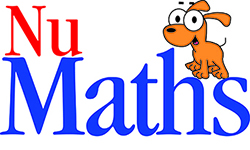|
Purple level - Year 4
Whole Numbers
- number chart 1-100
- place values (base ten blocks)
- place values table
- the abacus (bridging 100, 1 000, 10 000)
- number lines
- expanded notation
- expressing a number in words
- orderingv
- rounding to the nearest ten
- introducing factors and multiples
- ordering whole numbers
- patterns
- adding or subtracting 10 or 100
- multiplication by powers 10 (10, 100)
Addition
- addition of 2 digit numbers with 2 digit numbers (carries)
- addition in vertical format (3 digits numbers with 2 and 3 digit numbers)
- addition of three 2 digit numbers
- addition of 3 digit numbers with two other numbers
- number patterns with doubling
- number sentences
- introducing the "sum of"
- mental addition strategies (groping and repeated addition)
- addition and subtraction as inverse operations
- addition stories
- terminology
- estimation techniques
Subtraction
- consolidation of the subtraction concept
- number patterns
- subtraction 3 digit numbers (with and without zeros)
- regrouping in ones, tens and units
- estimation
- using addition to check subtraction
- subtraction stories
Multiplication
- consolidation of groups, number lines, arrays, and repeated addition
- multiplication terminology
- multiplication facts 1 to 10
- square numbers
- representing and recording multiplication
- 2 digit numbers by 1 digit numbers (regrouping and an internal zero)
- mental calculation using vertical format
- estimation
- story problems (graphs, shopping, tables, maps, number lines and words)
Division
- consolidation of equal shares and representing division
- review of making groups, number lines, and recognizing a division situation
- recording division (horizontal representation and the ÷ sign)
- introduction to the division frame
- other facts
- fact families
- terminology (dividend, divisor, quotient)
- estimation
- story problems
Fractions
- review of 1/2 , 1/3 , 1/4 as introduced in Green level
- conceptual development of common fractions
- identifying equal parts: concept of part and whole
- identifying unequal parts
- partitioning shapes - naming
- fraction symbolism - "top number" and "bottom number" at this stage
- common fractions compared with a whole
- comparing unit fractions and all fractions
- introduction of mixed numbers: concept and symbol
- decimal fractions to tenthsv
- addition and subtraction of decimal numbers (no regrouping,regrouping)
- story problems and estimation
Time and Money
- durations: hours, minutes and seconds, days, weeks, fortnight,years, decades, centuries, seasons
- representing time: o'clock, half past, 30 minutes past and minutes past, quarter past, a.m. and p.m.
- calendars: months, ordinals to 31st , calendar construction, seasons
- rhyme for number of days in the months
- write dates using correct abbreviations
- days and months to or since certain events
- identification: all coins and notes
- dollars and cents: written form and total value
- shopping : multiple items and change given
- money: operations with money and conversion of $ and cents to cents
Measurement
- concept of mass: consolidation and conservation of mass and the kilogram
- consolidation of length
- concept of length: comparison of 2 and more objects - consolidation
- informal units of length, the metre, length, width, height, boundary = perimeter
- consolidation of the concept of area and part units
- consolidation of the concept of volume
- the litre, less than, more than, millilitres
- concept of angles: turns and corners, right angles
Space
- identify and describe plane (2-D) shapes: inside/outside, tangrams, geometric: point, boundary, regular and irregular polygons, diagonals, table of facts
- compare and classify plane shapes: according to three attributes, 5 sides or more - shape is labelled according to the number of sides, quadrilaterals
- identify and describe 3-D shapes (solids): geometric: cube, sphere, cone, pyramid, side, prism, cylinder, cross-sections, pyramid construction v
- symmetry: exploration through plane shapes, lines of symmetry, shapes and sides etc
Chance and data
- introduction to probability: chance, possible, certain, likely, unlikely, more likely, least likely, best chance, equal chance
- graphs: 2 column - organising, collecting and interpreting
- graphs: 3 column - organising, collecting and interpreting
- graphs: 4 column - organising, collecting and interpreting
Back to Content homepage
|

